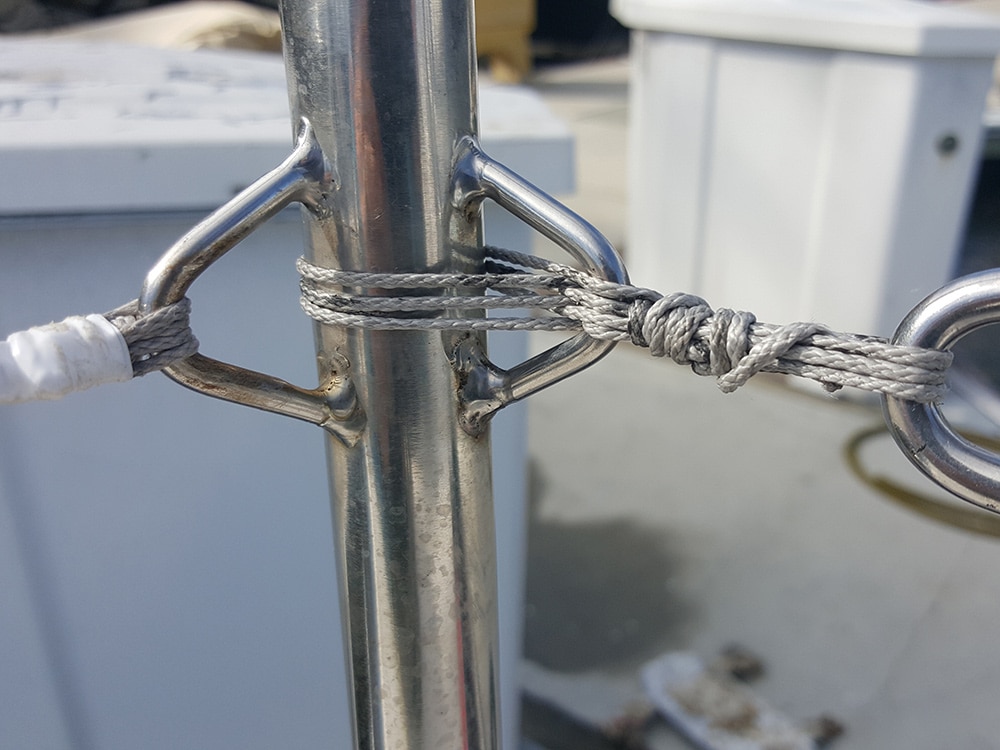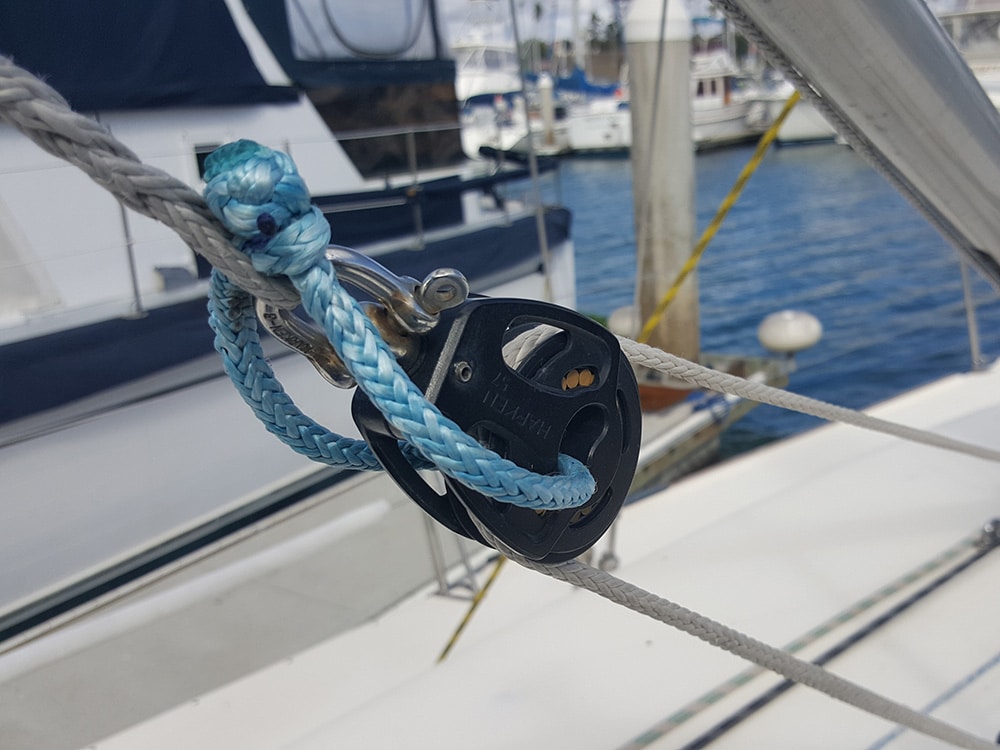
On any raceboat, whether it’s getting a lot of use light abuse, even the most thorough pre-race inspection may fail to reveal potential breakages. So, in the interest of finishing the race and avoiding potentially harmful failures there are simple tricks that’ll give you a piece of mind. Should something break, it won’t be a race-breaker.
For example, a broken outhaul can ruin a race. But you can be prepared for this with a few simple ideas. On small boat such as the Melges 24, I install a small ‘V’ cleat at the back of the boom on one side and drill a small hole on the other side. Then a small line with a figure eight knot in the end goes from the hole through the clew and to the cleat.
On mid-sized boats, such as 30 footers, I use small lashing set at the maximum ease amount. This way if the outhaul breaks, you can at least finish the race. On larger boats I use the reef line as the outhaul safety. This has the added bonus of being fully adjustable.

If you have a loose-footed main, you attach the mainsheet blocks using lashing or loops that go completely around the boom rather than just through an eye on the underside of the boom. Like the lifelines, this is much stronger and safer.









